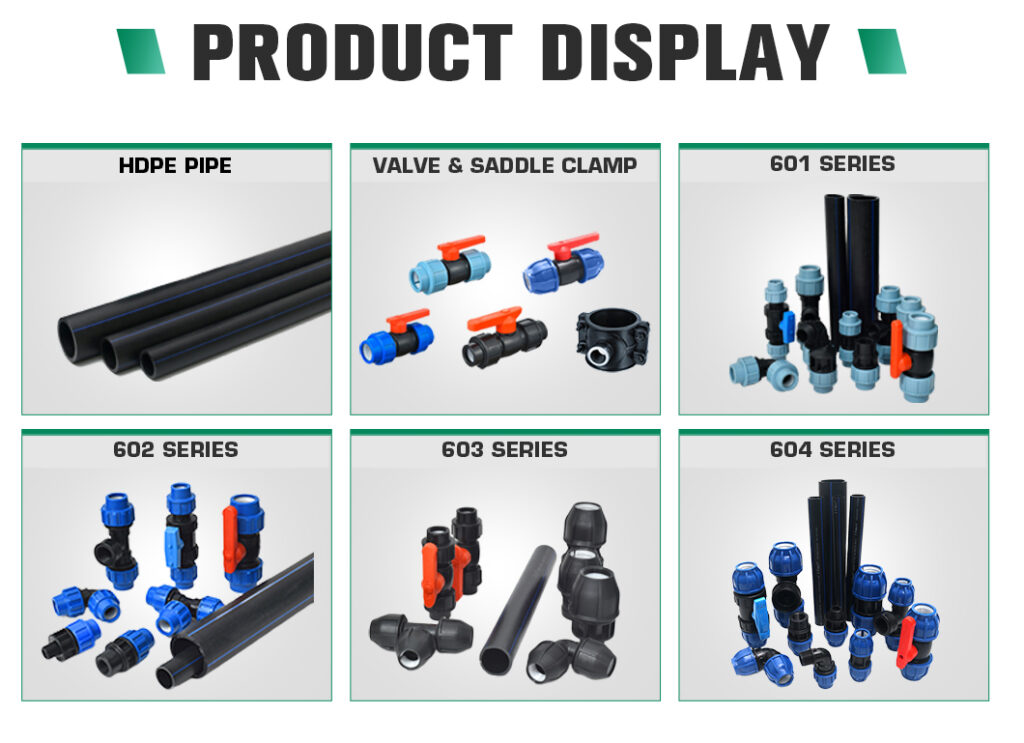Installing HDPE (High-Density Polyethylene) irrigation fittings is a critical step in setting up an efficient irrigation system. This guide will walk you through the essential steps, tools, and tips for a successful installation.
1. Understanding HDPE Irrigation Fittings
HDPE fittings are durable, lightweight, and resistant to corrosion and chemicals. They come in various shapes, such as elbows, tees, couplings, and valves, allowing for versatile irrigation system designs.
2. Required Tools and Materials
- Tools:
- Pipe cutter or saw
- Socket fusion or butt fusion machine (if using fusion fittings)
- Wrenches
- Measuring tape
- Marking pen
- Safety goggles and gloves
- Materials:
- HDPE pipes
- HDPE fittings (elbows, tees, etc.)
- Fusion machine (if applicable)
- Pipe support brackets (if needed)
3. Preparation
- Plan Your Layout: Design the irrigation system layout, including the mainline and lateral lines. Consider the water source, field shape, and plant spacing.
- Measure and Cut: Use a measuring tape to determine the lengths of pipe needed. Mark the cuts on the pipes, then use a pipe cutter or saw to cut them to size. Ensure the cuts are straight for proper fitting.
4. Installation Steps
- Joining Methods:
- Mechanical Fittings:
- Dry Fit: Before permanent installation, dry fit the components to ensure proper alignment.
- Assembly: Use wrenches to tighten the fittings securely. Avoid over-tightening to prevent damage.
- Fusion Fittings:
- Socket Fusion:
- Heat the fitting and pipe ends using a fusion machine until they reach the required temperature.
- Quickly join the two ends and hold them together for the specified cooling time.
- Butt Fusion:
- Align the ends of the pipes and heat them with a fusion machine.
- Once the surfaces are melted, press them together and hold until they cool.
- Socket Fusion:
- Mechanical Fittings:
5. Testing the System
- Pressure Testing: Once the installation is complete, conduct a pressure test to ensure there are no leaks. Follow local regulations for testing pressures.
- Check for Leaks: After the pressure test, inspect all joints and fittings for leaks. Make any necessary adjustments or repairs.
6. Backfilling and Finalizing
- Backfill Carefully: If the irrigation lines are buried, backfill the trenches with soil, ensuring no sharp objects can puncture the pipes.
- Install Supports: If required, install support brackets to keep the pipes in place and prevent movement.
7. Maintenance Tips
- Regularly check fittings and joints for signs of wear or leaks.
- Ensure that the irrigation system is flushed periodically to remove debris and sediment.
- Inspect the system before the irrigation season starts.
8. Safety Precautions
- Always wear safety goggles and gloves during installation.
- Be cautious when using cutting tools and hot fusion equipment.
9. Conclusion
Installing HDPE irrigation fittings can significantly enhance the efficiency and durability of your irrigation system. By following this comprehensive guide, you can ensure a successful installation that meets your irrigation needs. For best results, consider consulting with professionals or local experts to tailor the system to your specific requirements.
If you have any questions or need further assistance, feel free to ask!
View more:https://www.ifanfittings.com/


